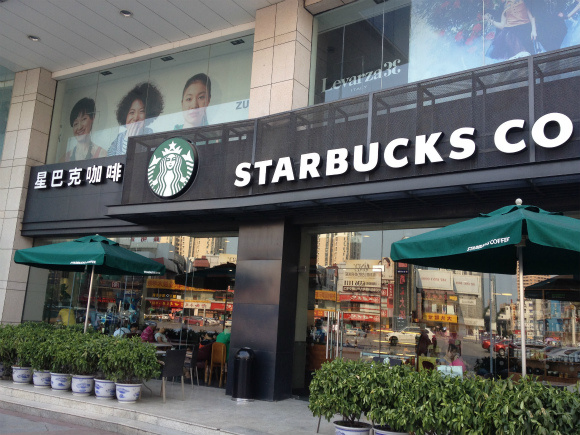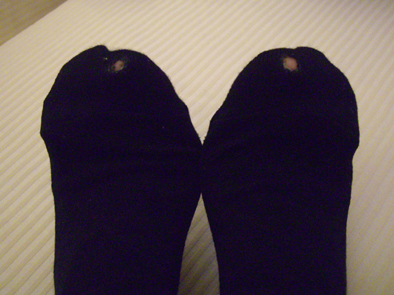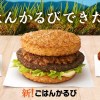
It’s safe to say that no one you see at Starbucks is there because they want to stretch their java-buying budget. With locations in more than 60 countries (and seemingly every branch in the Tokyo area at maximum capacity every day between 3 and 7 p.m., the Seattle-based chain must be doing something right, but sometimes it’s hard not to feel a bit surprised at the prices they charge.
But the next time you’re sitting in a Starbucks in Japan or America, pretending to sip from an empty mug because you’re not quite ready to disconnect from the free wi-fi but don’t feel like laying out the cash for another cup, consider yourself lucky. You’d be paying a lot more for your latte if you were at a Starbucks in China.
Starbucks’ first foray into Asia was in 1996, when its initial Japanese branches became the company’s first locations outside of North America. And while Starbucks is an unqualified success in Japan, it’s said that the market receiving the lion’s share of the company’s attention these days is China, where it’s winning over affluent urbanities just as it has in every nation the chain has spread to.
However, despite the low production costs that have made China a global manufacturing center, there’re no savings to be found by getting your Starbucks fix there.
Consider the cost of a short-size Starbucks latte. Prices vary by location in the US, but tend to run about $2.75. In Japan, well-known to have some of the highest consumer prices on the planet, that same beverage will set you back 320 yen (US $3.27).
Place your order at a Starbucks in China, though, and the damage comes to a whopping 27 yuan (US $4.39). This makes a small cup of Starbucks coffee over one and a half times the price charged in the US, and the economic equivalent of a reasonable meal in China.
The pricing structure becomes even more eye-popping when you stop to consider the expenses that go into making that latte. The cost of ingredients and labor are far cheaper in China than in most other nations where Starbucks operates. Analysts speculate that the company’s mark-up on its products in China is higher than in any other market, and in the neighborhood of 16 times its European profit margin.
Media outlets in China have begun to question these practices, referring to them as “profiteering” or simply “a rip-off.” But as Econ 101 tells us, where non-essential goods like gourmet coffee are concerned, products are worth exactly as much as people are willing to pay for them. So how is it that even with their high prices, Starbucks isn’t just surviving in China, it’s thriving?
Paradoxically, Starbucks’ high prices may actually be helping the company sell its beverages. Premium pricing strategy holds that sometimes a higher price conveys an image of higher quality or status to the buyer. For example, a T-shirt is an easier sell at $9.95 than $10. But shift your focus to a more upmarket item like a three-piece suit, and sometimes you can move more at a solid $1,000 than at $995. At that point, rather than feeling good about saving five bucks, the buyer who laid out an even grand can take some form of satisfaction in thinking, “Sure, I splurged a little, but now I’ve got a thousand-dollar suit to show for it!”
▼ Of course, this purchasing decision will eat into your sock budget.
At least one branding specialist feels this is the tack Starbucks is taking in China. “By setting the price high, you strengthen the perception of your product as a premium offering. In Starbucks’ case, it lets their customers feel that ‘Going to Starbucks shows that I appreciate the finer things in life,’ or ‘I’m not the same as everyone else.’ For some people, those feelings are, in and of themselves, satisfying.”
In this way, the key to Starbucks’ success is providing enough value, in whatever form, to justify its high prices in its customers’ minds. Aside from creating the same fashionable yet relaxing atmosphere as in its branches elsewhere, Starbucks in China offers services like its “Coffee Classroom” at branches in Shanghai. Available for groups of three to four customers, a lecturer from the chain will explain everything you’d care to know about the various types of coffee Starbucks offers.
Not only does this help customers find the blend most suited to their individual palate, it also helps to reinforce the image of a sophisticated coffee culture that Starbucks is promoting, with a subtle hint that the best place to experience it is at one of the nearly 1,000 Starbucks locations in China.
Sources: CNR, CRI, CNN
Top image: RocketNews24
Insert images: RocketNews24, Sangokushi, FC2
[ Read in Japanese ]


 Starbucks comes to Tottori, local coffee chain’s poster compares it to Perry arriving in Japan
Starbucks comes to Tottori, local coffee chain’s poster compares it to Perry arriving in Japan Starbucks is giving Japan alcoholic “Frappuccinos”
Starbucks is giving Japan alcoholic “Frappuccinos” Starbucks Japan launches new coffee-buying pen, and SoraNews24 tries it out
Starbucks Japan launches new coffee-buying pen, and SoraNews24 tries it out We lost the Starbucks lucky bag lotto, so we went on a luxury Starbucks shopping spree instead
We lost the Starbucks lucky bag lotto, so we went on a luxury Starbucks shopping spree instead Starbucks’ newest Chilled Cup drink comes with more coffee jelly than ever before
Starbucks’ newest Chilled Cup drink comes with more coffee jelly than ever before McDonald’s new Happy Meals offer up cute and practical Sanrio lifestyle goods
McDonald’s new Happy Meals offer up cute and practical Sanrio lifestyle goods All-you-can-drink Starbucks and amazing views part of Tokyo’s new 170 meter-high sky lounge
All-you-can-drink Starbucks and amazing views part of Tokyo’s new 170 meter-high sky lounge Super Nintendo World expansion gets delayed for several months at Universal Studios Japan
Super Nintendo World expansion gets delayed for several months at Universal Studios Japan Studio Ghibli glasses cases let anime characters keep an eye on your spectacles
Studio Ghibli glasses cases let anime characters keep an eye on your spectacles Kyoto’s 100 Demons yokai monster parade returns!
Kyoto’s 100 Demons yokai monster parade returns! Beautiful Sailor Moon manhole cover coasters being given out for free by Tokyo tourist center
Beautiful Sailor Moon manhole cover coasters being given out for free by Tokyo tourist center McDonald’s Japan’s new kalbi koshihikari rice burger and its friends only come out after sundown
McDonald’s Japan’s new kalbi koshihikari rice burger and its friends only come out after sundown Mister Donut ready to make hojicha dreams come true in latest collab with Kyoto tea merchant
Mister Donut ready to make hojicha dreams come true in latest collab with Kyoto tea merchant There’s a park inside Japan where you can also see Japan inside the park
There’s a park inside Japan where you can also see Japan inside the park The oldest tunnel in Japan is believed to be haunted, and strange things happen when we go there
The oldest tunnel in Japan is believed to be haunted, and strange things happen when we go there Disney princesses get official manga makeovers for Manga Princess Cafe opening in Tokyo
Disney princesses get official manga makeovers for Manga Princess Cafe opening in Tokyo More foreign tourists than ever before in history visited Japan last month
More foreign tourists than ever before in history visited Japan last month Starbucks reopens at Shibuya Scramble Crossing with new look and design concept
Starbucks reopens at Shibuya Scramble Crossing with new look and design concept Beautiful new Final Fantasy T-shirt collection on the way from Uniqlo【Photos】
Beautiful new Final Fantasy T-shirt collection on the way from Uniqlo【Photos】 Is the new Shinkansen Train Desk ticket worth it?
Is the new Shinkansen Train Desk ticket worth it? Foreign English teachers in Japan pick their favorite Japanese-language phrases【Survey】
Foreign English teachers in Japan pick their favorite Japanese-language phrases【Survey】 Japanese convenience store packs a whole bento into an onigiri rice ball
Japanese convenience store packs a whole bento into an onigiri rice ball We try out “Chan Ramen”, an underground type of ramen popular in the ramen community
We try out “Chan Ramen”, an underground type of ramen popular in the ramen community Studio Ghibli releases Kiki’s Delivery Service chocolate cake pouches in Japan
Studio Ghibli releases Kiki’s Delivery Service chocolate cake pouches in Japan Japan’s bone-breaking and record-breaking roller coaster is permanently shutting down
Japan’s bone-breaking and record-breaking roller coaster is permanently shutting down New definition of “Japanese whiskey” goes into effect to prevent fakes from fooling overseas buyers
New definition of “Japanese whiskey” goes into effect to prevent fakes from fooling overseas buyers Our Japanese reporter visits Costco in the U.S., finds super American and very Japanese things
Our Japanese reporter visits Costco in the U.S., finds super American and very Japanese things Studio Ghibli unveils Mother’s Day gift set that captures the love in My Neighbour Totoro
Studio Ghibli unveils Mother’s Day gift set that captures the love in My Neighbour Totoro Foreign passenger shoves conductor on one of the last full runs for Japan’s Thunderbird train
Foreign passenger shoves conductor on one of the last full runs for Japan’s Thunderbird train Domino’s Japan now sells…pizza ears?
Domino’s Japan now sells…pizza ears? New Japanese KitKat flavour stars Sanrio characters, including Hello Kitty
New Japanese KitKat flavour stars Sanrio characters, including Hello Kitty Kyoto creates new for-tourist buses to address overtourism with higher prices, faster rides
Kyoto creates new for-tourist buses to address overtourism with higher prices, faster rides Sales of Japan’s most convenient train ticket/shopping payment cards suspended indefinitely
Sales of Japan’s most convenient train ticket/shopping payment cards suspended indefinitely Sold-out Studio Ghibli desktop humidifiers are back so Totoro can help you through the dry season
Sold-out Studio Ghibli desktop humidifiers are back so Totoro can help you through the dry season Japanese government to make first change to romanization spelling rules since the 1950s
Japanese government to make first change to romanization spelling rules since the 1950s Ghibli founders Toshio Suzuki and Hayao Miyazaki contribute to Japanese whisky Totoro label design
Ghibli founders Toshio Suzuki and Hayao Miyazaki contribute to Japanese whisky Totoro label design Doraemon found buried at sea as scene from 1993 anime becomes real life【Photos】
Doraemon found buried at sea as scene from 1993 anime becomes real life【Photos】 Tokyo’s most famous Starbucks is closed
Tokyo’s most famous Starbucks is closed One Piece characters’ nationalities revealed, but fans have mixed opinions
One Piece characters’ nationalities revealed, but fans have mixed opinions We asked a Uniqlo employee what four things we should buy and their suggestions didn’t disappoint
We asked a Uniqlo employee what four things we should buy and their suggestions didn’t disappoint Princesses, fruits, and blacksmiths: Study reveals the 30 most unusual family names in Japan
Princesses, fruits, and blacksmiths: Study reveals the 30 most unusual family names in Japan Starbucks Japan’s new banana chocolate pudding is so good we can’t keep our language clean
Starbucks Japan’s new banana chocolate pudding is so good we can’t keep our language clean Starbucks You Are Here Collection expands to Japan with beautiful Mt. Fuji mugs
Starbucks You Are Here Collection expands to Japan with beautiful Mt. Fuji mugs Tokyo’s most famous Starbucks is closed
Tokyo’s most famous Starbucks is closed Starbucks Japan kicks off New Starbucks Coffee Journey with unique “white coffee” drinks
Starbucks Japan kicks off New Starbucks Coffee Journey with unique “white coffee” drinks Japanese netizens praise Starbucks’ move to promote 800 temp workers
Japanese netizens praise Starbucks’ move to promote 800 temp workers Starbucks revamps cafe in the heart of Tokyo’s Roppongi to create tea-centered haven
Starbucks revamps cafe in the heart of Tokyo’s Roppongi to create tea-centered haven Starbucks matcha marches into the Via lineup with new, Japan-exclusive green tea drink mix
Starbucks matcha marches into the Via lineup with new, Japan-exclusive green tea drink mix Starbucks Japan announces first of its 2022 fall menu, designed by Starbucks employees
Starbucks Japan announces first of its 2022 fall menu, designed by Starbucks employees Starbucks promises “new world of matcha” with green tea cheese Frappuccino, citrus green tea
Starbucks promises “new world of matcha” with green tea cheese Frappuccino, citrus green tea Starbucks Japan reopens with extra measures to prevent coronavirus’ spread
Starbucks Japan reopens with extra measures to prevent coronavirus’ spread Starbucks celebrates its 25th anniversary in Japan with a special commemorative drinkware range
Starbucks celebrates its 25th anniversary in Japan with a special commemorative drinkware range Starbucks Japan is a great place to go for…lasagna?!?【Taste test】
Starbucks Japan is a great place to go for…lasagna?!?【Taste test】 Starbucks Japan releases a Japanese Chai Tea Latte…at only two locations
Starbucks Japan releases a Japanese Chai Tea Latte…at only two locations The secret of Starbucks Japan’s Chocolate Chunk Cookie: It’s not made by Starbucks!
The secret of Starbucks Japan’s Chocolate Chunk Cookie: It’s not made by Starbucks! We get a ton of Starbucks goodies brought to our doorstep for a delivery cost of just 110 yen
We get a ton of Starbucks goodies brought to our doorstep for a delivery cost of just 110 yen Giant, house-sized Starbucks Mug appears in Tokyo, so Mr. Sato grabs own huge mug to check it out
Giant, house-sized Starbucks Mug appears in Tokyo, so Mr. Sato grabs own huge mug to check it out
Leave a Reply